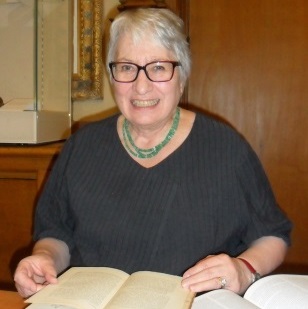Read more about a recently published short animation by the Royal Society that builds on the success of our previous animation explaining unconscious bias.

Are decisions made in groups better than decisions made on one’s own? Very often the answer is yes, and especially so when solutions to tricky problems have to be found. Take for example, the ‘ball and bat’ problem from the unconscious bias animation.
If a bat and a ball cost £1.10 and the bat costs £1 more than the ball, how much does the ball cost? Ten pence is the answer that tends to come to mind first, but it’s wrong. The correct answer is 5 pence. Individuals mostly get it wrong. Groups mostly get it right. This is because different group members come up with different answers and argue about the solution. Interestingly, people are more critical of other people’s arguments than of their own. This is an example of a self bias. Also, if you are persuaded that your own first answer was given by someone else, – and this can be done by trickery – you can come to the right conclusion by arguing with yourself. Still, it is easier to argue with others.
At the Society, we have recently published a short animation that builds on the success of our previous animation explaining unconscious bias. This is one of the many projects overseen by the Diversity Committee, which I have been chairing for the last three years. You can read more on our website.
But what do we know about how groups solve problems and make decisions, and what factors might hamper them? My colleagues, Dan Bang and Chris Frith, responded to my request to examine the evidence. They reviewed over 200 relevant articles with the aim of drawing out some practical recommendations. The Diversity Committee at the Royal Society asked for a condensed list of these evidence-based recommendations, so that groups that have to make decisions, such as selection panels, could be made aware of them. These recommendations are now readily available in the form of a handy guide.
As far as the scientific evidence is concerned, diversity is key to making better group decisions. Other things being equal, diverse groups find better solutions to problems, exactly because they can bring to bear different points of view. These can be discussed, and both traditional and novel perspectives can be explored and compared. Through disagreement and argument, the solution that first came to mind, – as in the bat and ball problem – may be revealed as faulty. Indeed, avoiding arguments and following a majority view is often deplored as ‘groupthink’. Groupthink arises when group members prefer to do what was always done in the past. It arises also when they are strongly inclined to agree with others, especially high-ranking members.
The literature review revealed some surprises. For instance, the existence of an equality bias, meaning the tendency to give equal weight to each member’s opinion. What could possibly be wrong with this? It is problematic because it fails to distinguish the people with the real expertise from the people who actually know very little. Hence the recommendation to give due weight to expertise, as members in diverse groups are likely to have different kinds of expertise.
A related thing I learned was the remarkable Dunning-Krueger effect: if you don’t know what you don’t know, you are likely to express your views with too much confidence. At the other extreme, if you know a lot, you are also likely to know what you don’t know, and this ironically makes the expert appear to be less confident. This means we must guard against being taken in by displays of confidence.
These, and other points that emerged from the review of the evidence, are summarized both in the handy guide and the animation. At just 2 minutes long, the animation bears repeated viewing and thus can act as a prompt at the start of meetings of selection panels to facilitate their work.
Of course, there is more to be done. We need to learn more about what it actually means to work in increasingly diverse groups. The skills required to make diversity work are not trivial. Undoubtedly, it means stepping out of one’s comfort zone, which can often be a challenge. After all, familiarity is comforting, and novelty can be scary. But we inevitably meet the unknown when we recognize when new problems arise, and old problems have to be tackled in new ways. No pain, no gain.





